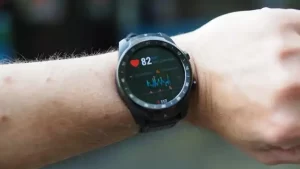Proton therapy is the first choice for elderly patients with early liver cancer!
- Statins Lower Blood Lipids: How Long is a Course?
- Warning: Smartwatch Blood Sugar Measurement Deemed Dangerous
- Mifepristone: A Safe and Effective Abortion Option Amidst Controversy
- Asbestos Detected in Buildings Damaged in Ukraine: Analyzed by Japanese Company
- New Ocrevus Subcutaneous Injection Therapy Shows Promising Results in Multiple Sclerosis Treatmen
- Dutch Man Infected with COVID-19 for 613 Days Dies: Accumulating Over 50 Virus Mutations
Proton therapy is the first choice for elderly patients with early liver cancer!
- Red Yeast Rice Scare Grips Japan: Over 114 Hospitalized and 5 Deaths
- Long COVID Brain Fog: Blood-Brain Barrier Damage and Persistent Inflammation
- FDA has mandated a top-level black box warning for all marketed CAR-T therapies
- Can people with high blood pressure eat peanuts?
- What is the difference between dopamine and dobutamine?
- How long can the patient live after heart stent surgery?
Proton therapy is the first choice for elderly patients with early liver cancer!
The first choice for early stage, large tumor size, and elderly liver cancer patients! Proton therapy rekindles new hope of survival!
At present, there are many treatment methods for liver cancer, such as surgery, intervention, and radiotherapy, but the effect is still not very satisfactory. The emergence of proton therapy has brought new survival hopes for liver cancer patients, especially those with larger liver cancers.
According to many international proton centers, the 5-year local control rate of proton therapy for liver cancer exceeds 80%. Today, the editor will lead everyone to look at the advantages of proton therapy for liver cancer and what are the specific beneficiaries?
A new choice of radiotherapy for liver cancer-proton therapy
The essence of proton therapy is radiotherapy, but the difference is that it uses proton rays to accurately irradiate the tumor. Its inherent Bragg peak principle makes the radiation release less energy before reaching the tumor. Just like a firework, all the energy is released when the tumor is fired. Achieve better tumor killing effect.
Liver cancer is not very sensitive to radiotherapy, and when the liver tissue is irradiated with a dose that kills liver cancer cells, normal liver cells are also quite killed. Proton therapy has broken the tolerance of radiotherapy for liver cancer, and we have turned proton therapy into a high-profile version of radiotherapy.
Proton therapy is better than ordinary radiotherapy. First of all, the radiation rays are different. Ordinary radiotherapy is X-ray, which belongs to photon rays, with greater side effects, and surrounding healthy tissues are easily damaged; protons use proton rays, which have little radiation damage to the human body.
Secondly, a Bragg peak is formed when proton rays irradiate the tumor. Simply put, all the energy of the rays is released after reaching the tumor site, and the healthy tissues before, after and around the tumor are not affected.
 Comparison of X-ray and proton therapy in the treatment of liver cancer
Comparison of X-ray and proton therapy in the treatment of liver cancer
X-rays release energy when they reach the human skin. Dermatitis is the most common side effect. It consumes more than half of the energy when reaching the tumor, and the effective dose is insufficient. In addition, energy will be emitted behind the tumor, and healthy tissues cannot avoid damage. Proton therapy takes a short time and can be completed within a few minutes. Generally, you can go home after outpatient treatment.
The advantage of proton therapy is that compared with other treatment methods, it can achieve a higher treatment response rate and a tumor control rate of more than 90%, while the liver function is not reduced, and the side effects with the stomach and intestines are not increased.
Compared with X-ray therapy, proton therapy has proven to have a higher tumor control rate and overall survival rate, and lower side effects. For example, there are important organs around the liver, such as the lungs, heart, esophagus, spine, etc. X-ray radiotherapy cannot guarantee the extent of damage to these organs, and serious complications may occur and cause death.
For early liver cancer, proton therapy has similar results with surgery or percutaneous ablation
In Japan, where the incidence of liver cancer is also high, the University of Tsukuba began to treat patients with hepatocellular carcinoma with protons in 1985. According to statistics, from 1985 to 1998, a total of 162 hepatocellular carcinoma patients received different hypofractionated proton treatments.
The treatment results showed that the 5-year local control rate (LC) was 86.9%, and there was no significant difference between tumors <5 cm and tumors >5 cm. The 5-year overall survival rate (OS) was 23.5%, and only 50.6% of patients had CP-A cirrhosis, and no grade 3 or higher toxic reactions occurred.
In addition, a new long-term follow-up (median follow-up 55 months) from the University of Tsukuba recently showed that the 5-year local control rate (LC) of patients with 0/A, B, and C stages were 94%, 87%, and 75%, respectively. . The 5-year overall survival rate (OS) was 69%, 66%, and 25%, respectively.
This study also confirmed that the results of proton therapy in patients with stage 0/A are similar to the results of partial hepatectomy or percutaneous ablation.
For larger liver cancers, proton therapy is more suitable
If hepatocellular carcinoma (HCC) patients are more likely to develop radiation liver disease after receiving SBRT (stereotactic radiotherapy), proton therapy may be more suitable.
A study has treated 22 HCC patients with a median tumor size of 11 cm (ranging from 10 to 14 cm), with an irradiation dose of 72.6 GyE/22 f (47.3-89.1 GyE/10~35 f), and a 2-year local control rate (LC) reached 87%, no toxic reactions of grade 3 or higher occurred.
Elderly patients with liver cancer are also suitable for proton therapy
A study by the University of Tsukuba included 21 patients with a median age of 81 years (80 to 85 years). The results showed that the patients had no grade 3 or higher toxic reactions, and the 3-year local control rate (LC) was 100%, 3 years The overall survival rate (OS) was 62%.
This study confirms that elderly patients can also obtain excellent therapeutic effects through proton therapy.
Appropriately increasing the dose of proton therapy can improve the treatment effect and prolong survival
In 2005, researchers in Chiba Prefecture, Japan, reported that after patients received proton therapy with a median dose of 76 GyE/20 f, 80% of 30 patients achieved complete radiological remission, and the 2-year local control rate (LC ) Is 96%. A retrospective analysis of 242 patients who received 8 proton treatment regimens (52.8~84 GyE/4~38 f) by the Hyogo Prefecture Ion Medicine Center showed that the 5-year local control rate (LC) was 90%, and the 5-year total The survival rate (OS) was 38%.
Researchers at MD Anderson Cancer Center recently reported the results of a retrospective analysis of 46 patients undergoing proton therapy with different segmentation schemes, including radiation doses of 58 GyE/15 f and 67.5 GyE/15 f (56%). They pointed out that for patients with a bioequivalent dose (BED) ≥90 GyE, the median overall survival increased from 15.8 months to 49.9 months, indicating a dose-response effect.
A rational view of proton heavy ion therapy
Although the current cost of proton therapy is relatively high, with the popularization of technology, this new technology will gradually decrease and benefit the public.
Especially in some areas of our country, the process of including proton therapy into medical insurance is accelerating. I believe that in the near future, more cancer patients will use this advanced anti-cancer technology.
In addition, the editor also reminds patients that in the era of precision medicine, cancer treatment should undoubtedly be more personalized and not limited to only one therapy or one technology.
Proton therapy cannot “cover all diseases”, but is one of the options for comprehensive cancer treatment. The comprehensive treatment of patients with surgery, drug therapy, radiotherapy and other methods is the guarantee for patients to obtain a better prognosis.
(source:internet, reference only)
Disclaimer of medicaltrend.org
Important Note: The information provided is for informational purposes only and should not be considered as medical advice.



